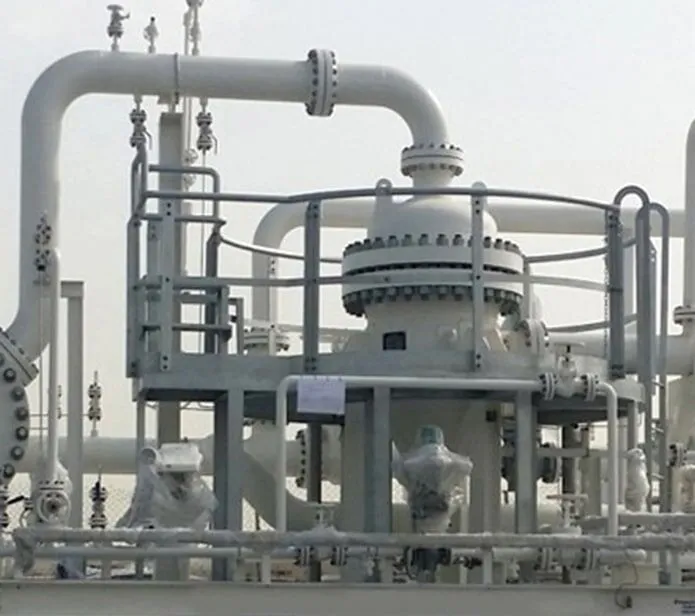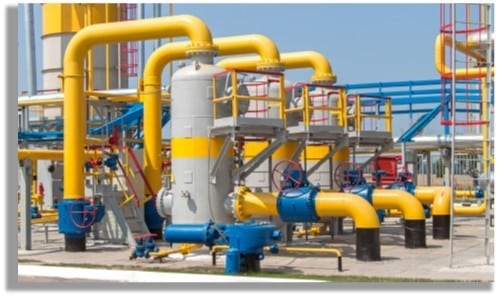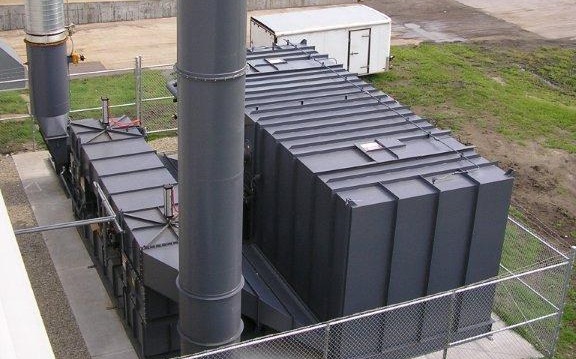By CECO KB Duct
This article is designed to help professionals in plant management, process engineering, maintenance, purchasing, and environment health and safety (EHS) to understand the differences between industrial duct options when they are seeking to control airborne process or manufacturing dust and contaminants. When evaluating industrial ductwork options, it is best to consider not only the initial / first costs of ductwork design and construction, but also the additional implementation costs (e.g., shipping and installation) and ongoing lifecycle costs of maintenance and modifications.
What is Industrial Duct?
Wikipedia defines industrial ducts as “low-pressure pneumatic conveyors to convey dust, particles, shavings, fumes, or chemical hazardous components from air in the vicinity to a shop floor or any other specific locations like tanks, sanding machines, or laboratory hoods.” Industrial duct comes in multiple styles (e.g., spiral, welded flanged, vanstoned flanged, and clamp-together).
What is Spiral Duct?
Spiral ductwork is a relatively inexpensive style of duct pipe that is named after its manufacturing method. It is popular in sizes between 16 feet and 36 feet, when there are long runs with few fittings.
Traditional spiral duct is formed by spiraling and locking strips of metal together to form one continuous piece. This construction method is typically less expensive than duct formed by rolling sheets. Spiral duct is usually available in any length, but the cost of shipping long sections can make it relatively expensive to deliver. Spiral pipe sections are typically joined together using inset-off-set with barrel clamps, spiral pipe connectors, sheet metal screws, or special angle rings.
Spiral duct has a number of disadvantages that should be considered, as addressing these often more than offset the relatively inexpensive fabrication cost:
- It is often produced in long sections that make handling, loading and unloading difficult, and moving the duct into place can also be very challenging.
- Exact cuts are required
- All of the joining methods for spiral duct are difficult and/or costly:
- Barrel clamps
- Spiral pipe connectors
- Sheet metal screws
- Special angle rings or flanges
- Crimping one end and forcing it into the adjoining piece
- Collars
When all of the costs and the timing associated with installation and ongoing maintenance are taken into account, spiral duct is sometimes found to be a sub-optimal solution versus manufacturing the ductwork in small sections and joining it together.
Joining together small sections of duct represents a viable alternative to spiral duct. The classifications of joined-together duct take their names from joining methods used – welded flanged, vanstoned flanged, and clamp-together.
What is Welded Flanged Duct?
Flanges are angle rings that are typically constructed in black iron, galvanized or stainless steel, with or without holes, and with both standard and special hole patterns. These flanges / angle rings are rolled, and then the ends are welded to create a ‘ring’ that fits over the duct. The welds are either continuous, for a full weld, or intermittent, and the faces of the flanges are mated together. Flanged duct work can be sealed very tightly with the addition of a gasket between the mating flanges. However, it typically takes a skilled mechanic to cut to length and fit the flanges, and there is little room for error.
As the act of welding is both permanent and costly, it is the least common method of joining sections of duct, and it is most appropriate with applications where 100% air-tightness or liquid-tightness is required. Where there are heavy concentrations of liquid, or for the conveyance of dust under positive pressures, flanged duct with a gasket is a good fit.
The rings and flanges may be custom manufactured with a 3-inch (7.62 centimeter) diameter all the way up to the size that you could drive a truck through, and the duct is constructed with premium quality materials to ensure material integrity for even the most abrasive applications. Flanged duct pieces are usually available in 5 foot to 20 foot lengths, depending on the diameter.
The gauge of sheet metal is the unit of its thickness. For sheet metal, a retrogressive scale (i.e., higher numbers equate to lower thickness) starts with 10 gauge representing a thickness of 0.1345 inches (3.416 millimeters). As the gauge number increases, the thickness of the sheet metal drops by 10 percent.
Flanged duct can be manufactured in lighter gauges, or in heavy gauge (even up to 0.25 inches or 6.35 millimeters) for a fully welded product, all depending upon the application. Seam welds are used for flanged duct with a diameter of 25 inches (63.5 centimeters) and higher, and seam welds are also used for 16-gauge (0.0625 inch or 1.588 millimeter thickness) and heavier.
What is Vanstone Flanged Duct?
Another variation of flanged duct is the “vanstone” or “loose” flanged duct. The term “vanstone” refers to a technique where flanges are placed onto the pipe, with the lip turned back at 90 degrees and left loose for a secure metal-to-metal connection when the flanges are pulled together and the vanstone lips are connected. The flanges are not attached to the duct, and this allows for easy alignment of the centerline of the components.
What is Clamp-Together Duct?
The clamp-together duct concept is similar to building with Lego blocks or an erector set. All straight duct comes in a nominal 5-foot length and with rolled lips on both ends. When the duct is cut to a required length, the cut end will slide into an 11” long adjustable sleeve that slides over the pipe until the length of the sleeve and pipe assembly measure the desired length (as in a telescoping joint). Once the desired length is met, the sleeve clamps to the cut duct using a standard duct clamp and an O-ring.
Clamp-together ducting is applicable to virtually every dust or fine particulate collection system (e.g., wood dust, paper dust, chemical powders, and pharmaceuticals), and it is also used in fume exhaust and oil mist collection, and abrasive applications (e.g., metal shavings, sand, and coal). Clamp-together branches are fabricated to SMACNA duct construction standards, but may be fabricated in heavier gauges for more abrasive applications. A wide variety of gasket materials, coupled with stainless steel material, makes it possible for clamp-together ducting to address even the harshest applications.
The standard n-butyl rubber gasket works well for 95% of all applications, but the gasket is also available in FDA silicone, which is appropriate for some food and high-temperature applications. Viton and Gore-Tex gasket materials address the balance of applications where standard rubbers will be ‘eaten’ away.
When compared to traditional spiral duct and flanged duct, clamp-together duct offers a number of advantages for consideration:
- Speed and ease of installation – the primary advantage of clamp-together duct is that it is fast and easy to install, reducing the installation time by up to 70% versus spiral duct, and up to 50% versus flanged duct. This translates into significant shipping and implementation cost savings that can more than offset fabrication cost differences between different duct options. With clamp-together duct, pieces can be clamped together without special tools, rivets, screws, or welding. In-house maintenance teams can self-install without the need for outside contractors.
- Infinite adjustability – no matter how short the piece needed, you can make it. Simply cut a piece of pipe, apply on the O-ring, slide it into any fitting, and then simply clamp.
- Clamp-together duct clamps are guaranteed forever by the manufacturers.
- Re-usability and cleaning – The duct clamp securely holds the duct, but may be easily released for modifications. Clamp-together duct is easy to uninstall, clean, and relocate (without tools), as you move machinery or have other changes in work areas, which results in one of the lowest life cycle costs of any ducting product. Downtime for maintenance and floor plan changes is minimized.
- Flexibility – Available in construction materials to fit most applications – galvanized and stainless steel.
- Serviceability – in abrasive applications, wear-points can be replaced in seconds, without tools. And, as all of the 5-foot pieces clamp-together, no point in the system is more than five feet from a tool-free access point.
- Minimizes waste – Avoiding the waste from precision cutting and fitting mistakes associated with other types of duct translates into additional savings.
Summary
Spiral duct is worth consideration for long duct lengths between 16 feet and 36 feet, when there are long runs with few fittings.
Welded flanged duct is most appropriate with applications where 100% air-tightness (e.g., the conveyance of dust under positive pressures) or liquid-tightness (i.e., heavy concentrations of liquid) is required.
However, when you compare the total lifecycle cost of your ducting system – fabrication, shipping, labor, waste, ongoing maintenance, etc., clamp-together duct is a competitive option worth strong consideration for most applications.
To learn more about duct clamps and clamp-together duct, view our brief whiteboard video. To find out how CECO Environmental can help you grow your business while improving your air quality, please view this brief video.
When it comes to industrial ductwork and duct clamps, contact CECO KB Duct. We have a solution for you.



